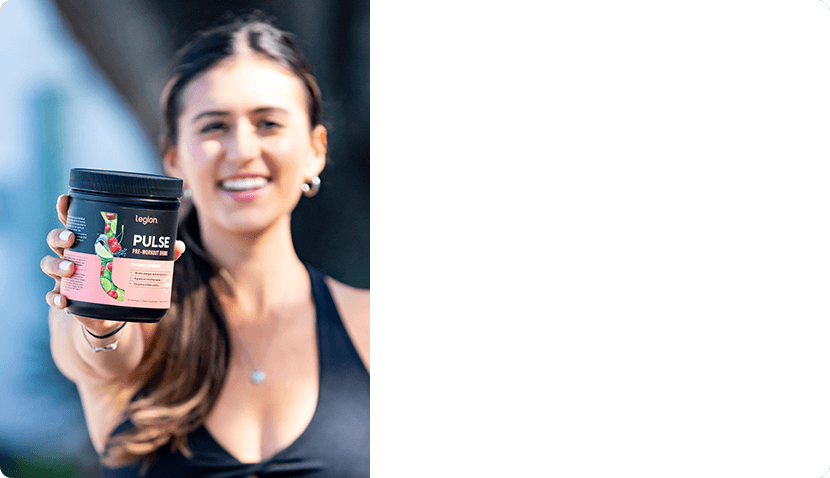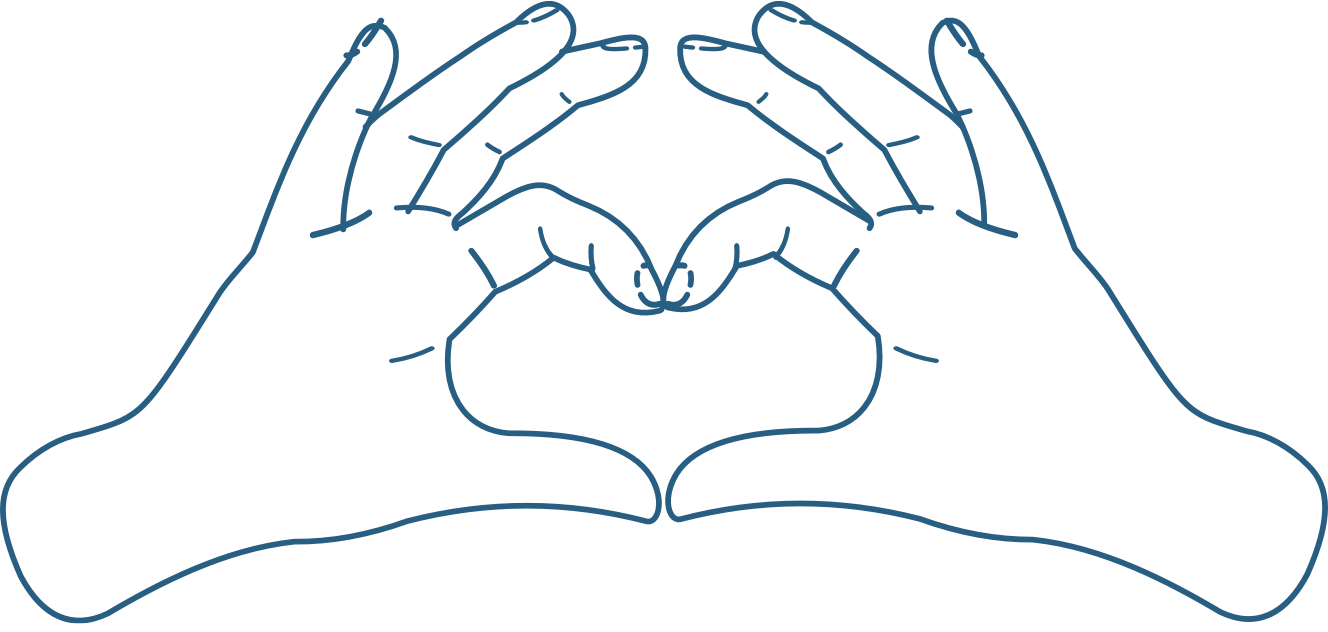Listen on Apple Podcasts | Listen on Spotify | Listen on YouTube
According to weightlifting purists, if you’re not squatting, you’re not doing it right.
Sure, you can get a decent set of wheels without squatting (there are plenty of other exercises you can do to train your quads, hamstrings, glutes, and calves), but the reason the squat reigns supreme is it’s freaking hard.
The squat requires just about every major muscle group in your body to work in concert to generate a tremendous amount of force, as well as near picture-perfect form if you’re going to ever put up impressive numbers.
You can cheat your way through the bench press and even the deadlift and eventually move heavy loads, but not the squat.
If you don’t have the whole-body strength and technique, there’s no way to wiggle or jigger the weight up. You just get stuck.
A good squat is worth a lot more than bragging rights, though.
It’s also one of the single best exercises for developing every major muscle group in your body, from nosehole to butthole, snout to tail.
If you do it correctly, that is.
Let’s get to it.
What did you think of this episode? Have anything else to share? Let me know in the comments below!
Transcript:
This episode is brought to you by me. Seriously though, I’m not big on promoting stuff that I don’t personally use and believe in. So instead, I’m going to just quickly tell you about something of mine, specifically my one on one So the long story short here is this is the personal coaching service that I wish I had when I started in the gym many years ago.
Every diet and training program that we create for clients is 100 percent custom. We provide daily workout logs and do weekly accountability calls. Our clients get priority email service and discounts on supplements. And the list goes on and on. Furthermore, my team and I have also worked with hundreds of people of all ages, circumstances, and needs and goals.
So no matter how tricky you might think your situation is, I promise you, we can figure out how to get you results. If I have. Pete your interest. And you want to learn more than head on over to www. muscleforlife. com forward slash coaching and schedule your free consultation call. Now I’ll tell you, there’s usually a wait list and new slots fill up very quickly.
So if you’re interested at all, don’t wait, go schedule your call now. Alrighty. That is enough. Shameless plugging for now, at least let’s get to the show. Hey, Mike Matthews here from Muscleful Life and Legion Athletics back with another video podcast. And this time we’re going to talk squatting. And specifically I’m going to share with you four ways to increase your squat that you probably haven’t thought of.
And that means that I’m not just going to give you some obvious tips like work on your form, increase your frequency or increase your volume or load, eat more food and so forth. Instead, I’m going to share with you a few things that aren’t talked about as much, but can make a big difference in your squat performance.
So my first tip is to learn how to brace properly. Now what I mean by that is learn how to create and hold tightness in your body while you’re doing the exercise and in weightlifting circles. Just this generally refers to how well you can trap air in your torso and then hold it under heavy loads. Now, when you do this, you are creating what is known as intra abdominal pressure, which helps stabilize your body.
It helps keep your torso rigid. It helps prevent the bar from moving around off of the desired bar path when you’re squatting. And the more you can do those things, the more you can stabilize your body. The more you can stiffen your torso and the more you can get the bar under control when you’re squatting, the better you are going to squat.
Now, how do you stabilize properly? I recommend you do something called the Valsalva Maneuver, which if you wanna read more about, you can click the link up here. But basically what you want to do is every one or two reps, you take a breath in that fills your lungs to about. 80 percent of their maximum capacity, and you want to draw that air deep into your stomach, press your tongue against the roof of your mouth, and then you hold that until you are past the hardest part of your lift.
Okay, my second tip is to use the right equipment and the three things that I like to use when I’m squatting, especially when I’m squatting heavy or weightlifting shoes, knee sleeves and a weightlifting belt. So let’s talk shoes first. The reason why I like to squat in weightlifting shoes is they give you a very stable base to press off of.
And if you’ve never tried a weightlifting shoe, you will know what I mean. The first time you do put them on and squat in them, it is a very difficult exercise. different experience, and that’s why research shows that weightlifting shoes can alone improve your squat. So if you want to learn more about weightlifting shoes why they work, how they work, how to pick the right pair for you, just click the link up here to check out an article that I wrote on them.
Okay. So next is sleeves, which are not wraps, right? Wraps are like the bandages that you wrap around your knees. You’ve probably seen a lot of power lifters use wraps. It’s pretty common in that space. And that’s because it does help you increase the amount of weight that you can lift on exercises like the squat and deadlift.
But research shows that it also increases the wear and tear in your joints. So I don’t wrap my knees, but I do use sleeves, which look like this. And the reason why I like to use sleeves when I’m squatting is it just makes it more comfortable. It provides a little bit of joint support because it provides a little bit of tightness, helps keep everything in place and moving the way that it should be moving, and it also helps keep my joints warm in between sets when I’m resting, keeps the ligaments and the tendons warm, which of course makes them more pliable, makes them more stretchy, which just makes for a more comfortable lift.
Now, in terms of specific sleeves, I’ve only tried one and I liked them, so I never had a reason to try another. And the ones that I use are made by a company called Reband, R E H B A N D. Last we have the weightlifting belt, which is a controversial bit of hardware because many people say that they work.
Many people say that they don’t do anything. Many people say that they decrease the risk of injury. Many people say they increase the risk of injury and the long story short is multiple studies have shown that a weightlifting belt when used properly, which I’ll talk about in a second, does increase performance on exercises like the squat and deadlift, but probably does not reduce the risk of injury.
In other words, a weightlifting belt can help you gain muscle and strength faster, but you cannot use it as a crutch for poor form. You can’t use poor form on an exercise like a deadlift, where you’re rounding your lower back, for example, but you think because you’re wearing a belt, you’re okay.
No, you’re not okay. That is dramatically increasing your risk of injury regardless of whether you are using a belt or not. And as far as using it correctly, the correct use of weightlifting belt is to increase the intra abdominal pressure that we spoke about earlier. And you do that by when you take in your deep breath, you’re taking it into your stomach, you’re pressing your stomach out against the belt.
That is what increases that intra abdominal pressure, which makes your body more stable, makes your torso more stable, which then allows you to comfortably move more weight. So if you want to learn more about weightlifting belts how they work, why they work and so forth, click the link up here to check out an article I wrote.
But as far as a specific recommendation goes, I like the Inzer lever belt. That’s what I personally use and recommend.
Hey, quickly, before we carry on, if you are liking my podcast, would you please help spread the word about it? Because no amount of marketing or advertising gimmicks can match the power of word of mouth. If you are enjoying this episode and you think of someone else who might enjoy it as well, please do tell them about it.
It really helps me. And if you are going to post about it on social media, definitely tag me so I can say, Thank you. You can find me on Instagram at Muscle4Life Fitness, Twitter at Muscle4Life, and Facebook at Muscle4Life Fitness. Okay. So my third tip for improving your squat is to micro load your weights.
And this is helpful because as you probably know, your number one goal as a natural weight lifter is to increase your whole body strength over time. In other words, if you want to achieve maximum whole body muscularity, then you also want to achieve maximum whole body strength. And of course, the most effective way to do that is to add weight to the bar over time.
This is why all good weightlifting routines emphasize progressive overload. Sure, metabolic stress matters. Sure, volume matters. Sure, frequency matters. But more than anything else, progressive overload is what matters. If you are not getting stronger over time, there is a point where your muscle growth is just going to stall.
Now, there are different ways that you can Of accomplishing this a simple way is like a linear progression model. Like you find in a strength training program, like starting strength, where you work with a given weight until you can, let’s just say in this case, squat until you can squat it for three sets of five reps.
At which point you add 10 pounds to the bar, work with that new weight until you can squat it for three sets of five reps, add weight and so on. Now that can work fine, but sometimes you will find that you just hit a sticking point. You just get stuck at a certain weight for no apparent reason. And this is where micro loading can help, which entails adding smaller amounts of weight to the bar using these fractional plates.
So instead of adding, 10 pounds to the bar, you add only five pounds to the bar because you are using two and a half pound plates as opposed to five pound plates. And they even make one and a half pound fractional plates, so you can add just two and a half pounds of weight to the bar, which again, while that might not sound like much, You are moving forward.
You’re making progress. So if you can squat 225 for three sets of five, but when you go up to 235, you just get stuck. You haven’t been able to move past it. What you can do is you could add just five pounds to the bar so you could squat 230 and you might actually find now that you can work up to three sets of five with 230 at which point then you can move on to 235.
and get unstuck. Or you could increase the weight by just two and a half pounds. So you’d be squatting 227. 5 pounds until you can squat it for three sets of five. And then you could move up to 230 or you could try the jump to 235 because at that point, again, you might just be unstuck and progressing again.
Now, as far as fractional plates themselves go, most gyms, of course, have two and a half pound plates, but don’t have anything smaller. So if you want to get some fractional plates, I recommend some plates made by a company called Adder fitness, A D E R fitness. You can get them on Amazon. They are cheap and simple, and you can just bring them with you because they don’t weigh that much.
Just keep them in your gym bag or just keep them at the gym and no one’s going to steal them. Just hopefully they’re available when you want them. Okay, my fourth and final tip. For improving your squat is increasing your hip, knee, and ankle mobility. So improving how your hips, your knees, and your ankles can move.
It’s very common for people, especially people who have been lifting weights for a while and who haven’t done much mobility work, if any at all, and who are now progressing to heavier and heavier weights to have very tight muscles in their lower body that restrict the movement of their hips, knees, and ankles.
And this can hinder performance because one, it can make squatting pretty uncomfortable again, especially as you are progressing toward heavier weights and higher volumes. And if you want to push through the discomfort, no pain, no gain, you can to a point, but your body naturally is going to try to hold you back because it knows that you are pushing toward an injury.
So if you really are stubborn and you even try to go through your body’s natural internal signals to stop, you probably just gonna end up getting hurt. But if you can just address those mobility issues and resolve them, then you are simply removing those obstacles to your progress. Now in terms of actually doing it, it’s very simple.
I myself do an eight minute routine every day. That’s it. Just eight minutes a day. And it since I’ve started it. It has made a tremendous difference in my squatting because again, I was running into hips in particular. My hips would get very tight, my hip flexors, my psoas, and that would manifest in, it would make my squatting uncomfortable, especially with heavy weight, deep squatting, it would just be uncomfortable.
And then it would also turn into lower back tightness, lower pat, lower back discomfort. Once I started doing an eight minute routine. Every day those problems have just vanished. So to check this routine out, simply click on this link, you’ll be taken to an article that is all about lower body mobility and particularly for squatting.
And if I’m at my limit in terms of links per video, I don’t remember how many I can put head over to muscle for life. com and just search for mobility and you will see it in the search results. Hey there, it is Mike again. I hope you enjoyed this episode and found it interesting and helpful. And if you did, and don’t mind doing me a favor and want to help me make this the most popular health and fitness podcast on the internet, then please leave a quick review of it on iTunes or wherever you’re listening from.
This not only convinces people that they should check the show out, it also increases its search visibility. And thus helps more people find their way to me and learn how to build their best bodies ever too. And of course, if you want to be notified when the next episode goes live, then just subscribe to the podcast and you won’t miss out on any of the new goodies.
Lastly, if you didn’t like something about the show, then definitely shoot me an email at mike at muscle for life. com and share your thoughts on how you think it could be better. I read everything myself and I’m always looking for constructive feedback, so please do reach out. All right, that’s it. Thanks again for listening to this episode and I hope to hear from you soon.
And lastly, this episode is brought to you by me. Seriously though, you. I’m not big on promoting stuff that I don’t personally use and believe in. So instead I’m going to just quickly tell you about something of mine, specifically my one on one coaching service. So the long story short here is this is the personal coaching service that I wish I had when I started in the gym many years ago.
Every diet and training program that we create for clients is 100 percent custom. We provide daily workout logs and do weekly accountability calls. Our clients get priority email service and discounts on supplements. And the list goes on and on. Furthermore, my team and I have also worked with hundreds of people of all ages, circumstances, and needs and goals.
So no matter how tricky you might think your situation is, I promise you, we can figure out how to get you results. If I have piqued your interest and you want to learn more, then head on over to www. muscleforlife. com forward slash coaching and schedule your free consultation call. Now I’ll tell you, there’s usually a wait list and new slots fill up very quickly.
So if you’re interested at all, don’t wait, go schedule your call now.
Scientific References +
- Fry, A. C., Smith, J. C., & Schilling, B. K. (2003). Effect of Knee Position on Hip and Knee Torques during the Barbell Squat. Journal of Strength and Conditioning Research, 17(4), 629–633. https://doi.org/10.1519/1533-4287(2003)017<0629:EOKPOH>2.0.CO;2
- Schoenfeld, B. J. (2010). Squatting kinematics and kinetics and their application to exercise performance. In Journal of Strength and Conditioning Research (Vol. 24, Issue 12, pp. 3497–3506). J Strength Cond Res. https://doi.org/10.1519/JSC.0b013e3181bac2d7
- Bloomquist, K., Langberg, H., Karlsen, S., Madsgaard, S., Boesen, M., & Raastad, T. (2013). Effect of range of motion in heavy load squatting on muscle and tendon adaptations. European Journal of Applied Physiology, 113(8), 2133–2142. https://doi.org/10.1007/s00421-013-2642-7
- Paoli, A., Marcolin, G., & Petrone, N. (2009). The effect of stance width on the electromyographical activity of eight superficial thigh muscles during back squat with different bar loads. Journal of Strength and Conditioning Research, 23(1), 246–250. https://doi.org/10.1519/JSC.0b013e3181876811
- Bryanton, M. A., Kennedy, M. D., Carey, J. P., & Chiu, L. Z. F. (2012). Effect of squat depth and barbell load on relative muscular effort in squatting. Journal of Strength and Conditioning Research, 26(10), 2820–2828. https://doi.org/10.1519/JSC.0b013e31826791a7
- Gorsuch, J., Long, J., Miller, K., Primeau, K., Rutledge, S., Sossong, A., & Durocher, J. J. (2013). The effect of squat depth on multiarticular muscle activation in collegiate cross-country runners. Journal of Strength and Conditioning Research, 27(9), 2619–2625. https://doi.org/10.1519/JSC.0b013e31828055d5
- Esformes, J. I., & Bampouras, T. M. (2013). Effect of back squat depth on lower-body postactivation potentiation. Journal of Strength and Conditioning Research, 27(11), 2997–3000. https://doi.org/10.1519/JSC.0b013e31828d4465
- Hales, M. E., Johnson, B. F., & Johnson, J. T. (2009). Kinematic analysis of the powerlifting style squat and the conventional deadlift during competition: is there a cross-over effect between lifts? Journal of Strength and Conditioning Research / National Strength & Conditioning Association, 23(9), 2574–2580. https://doi.org/10.1519/JSC.0b013e3181bc1d2a
- Yavuz, H. U., Erdağ, D., Amca, A. M., & Aritan, S. (2015). Kinematic and EMG activities during front and back squat variations in maximum loads. Journal of Sports Sciences, 33(10), 1058–1066. https://doi.org/10.1080/02640414.2014.984240
- McCurdy, K., & Conner, C. (2003). Unilateral support resistance training incorporating the hip and knee. In Strength and Conditioning Journal (Vol. 25, Issue 2, pp. 45–51). Allen Press Inc. https://doi.org/10.1519/00126548-200304000-00007
- Speirs, D. E., Bennett, M. A., Finn, C. V., & Turner, A. P. (2016). Unilateral VS. Bilateral squat training for strength, sprints, and agility in academy rugby players. Journal of Strength and Conditioning Research, 30(2), 386–392. https://doi.org/10.1519/JSC.0000000000001096
- Andersen, V., Fimland, M. S., Brennset, Haslestad, L. R., Lundteigen, M. S., Skalleberg, K., & Saeterbakken, A. H. (2014). Muscle activation and strength in squat and bulgarian squat on stable and unstable surface. International Journal of Sports Medicine, 35(14), 1196–1202. https://doi.org/10.1055/s-0034-1382016
- Campos, G. E. R., Luecke, T. J., Wendeln, H. K., Toma, K., Hagerman, F. C., Murray, T. F., Ragg, K. E., Ratamess, N. A., Kraemer, W. J., & Staron, R. S. (2002). Muscular adaptations in response to three different resistance-training regimens: Specificity of repetition maximum training zones. European Journal of Applied Physiology, 88(1–2), 50–60. https://doi.org/10.1007/s00421-002-0681-6
- Sato, K., Fortenbaugh, D., & Hydock, D. S. (2012). Kinematic changes using weightlifting shoes on barbell back squat. Journal of Strength and Conditioning Research, 26(1), 28–33. https://doi.org/10.1519/JSC.0b013e318218dd64
- Potter, S., & Boyd, J. M. (2017). Bridging the Performance Gap: Interdisciplinary Collaboration with Sports Dietitians. Strength and Conditioning Journal, 39(4), 4–9. https://doi.org/10.1519/SSC.0000000000000296
- Kingma, I., Faber, G. S., Suwarganda, E. K., Bruijnen, T. B. M., Peters, R. J. A., & Van Dieën, J. H. (2006). Effect of a stiff lifting belt on spine compression during lifting. Spine, 31(22). https://doi.org/10.1097/01.brs.0000240670.50834.77
- Mcgill, S. M. (2005). On The Use Weight Belts.
- Argus, C. K., Gill, N. D., Keogh, J. W. L., & Hopkins, W. G. (2011). Acute effects of verbal feedback on upper-body performance in elite athletes. Journal of Strength and Conditioning Research, 25(12), 3282–3287. https://doi.org/10.1519/JSC.0b013e3182133b8c
- Richter, J., Gilbert, J. N., & Baldis, M. (2012). Maximizing Strength Training Performance Using Mental Imagery. Strength and Conditioning Journal, 34(5), 65–69. https://doi.org/10.1519/SSC.0b013e3182668c3d
- Munn, J., Herbert, R. D., Hancock, M. J., & Gandevia, S. C. (2005). Resistance training for strength: Effect of number of sets and contraction speed. Medicine and Science in Sports and Exercise, 37(9), 1622–1626. https://doi.org/10.1249/01.mss.0000177583.41245.f8
- Hatfield, D. L., Kraemer, W. J., Spiering, B. A., Häkkinen, K., Volek, J. S., Shimano, T., Spreuwenberg, L. P. B., Silvestre, R., Vingren, J. L., Fragala, M. S., Gómez, A. L., Fleck, S. J., Newton, R. U., & Maresh, C. M. (2006). The impact of velocity of movement on performance factors in resistance exercise. Journal of Strength and Conditioning Research, 20(4), 760–766. https://doi.org/10.1519/R-155552.1
- Neils, C. M., Udermann, B. E., Brice, G. A., Winchester, J. B., & McGuigan, M. R. (2005). Influence of contraction velocity in untrained individuals over the initial early phase of resistance training. Journal of Strength and Conditioning Research, 19(4), 883–887. https://doi.org/10.1519/R-15794.1
- Ki, E., Dea, A., Ferguso, S. L., Se, D., & Bembe, M. G. (2011). Effects of 4 weeks of traditional resistance training vs. superslow strength training on early phase adaptations in strength, flexibility, and aerobic capacity in college-aged women. Journal of Strength and Conditioning Research, 25(11), 3006–3013. https://doi.org/10.1519/JSC.0b013e318212e3a2
- Pryo, R. R., Sforz, G. A., & Kin, D. L. (2011). Optimizing power output by varying repetition tempo. Journal of Strength and Conditioning Research, 25(11), 3029–3034. https://doi.org/10.1519/JSC.0b013e31820f50cb










